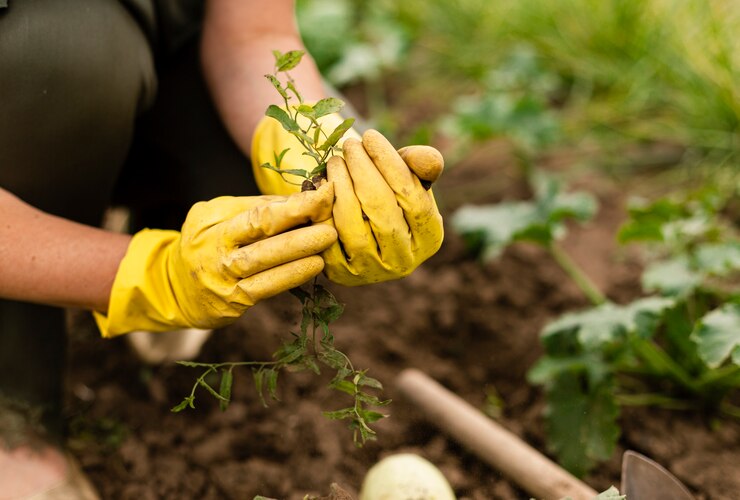How Much Do Gardeners Make?
Gardening is a profession that combines passion for the outdoors, a love of plants, and practical horticultural skills. The salary of a gardener can vary widely depending on factors such as location, experience, and whether they are self-employed or working for a company. As demand for green spaces and sustainable practices grows, so does interest in gardening jobs, making understanding the compensation for this field increasingly relevant.
Salaries in the gardening profession are influenced by various factors, including the level of skill, years of experience, the complexity of gardening tasks, and the geographical region where the work is performed. Some gardeners may start their careers with basic tasks like lawn maintenance and progress to more complex landscape design, influencing their earning potential. Additionally, benefits such as health insurance, retirement plans, and paid time off can add considerable value to the overall compensation package for gardeners.
Key Takeaways
- Gardener salaries are influenced by experience, skill level, and location.
- Benefits can significantly enhance a gardener’s total compensation.
- Earning potential grows with advanced responsibilities and specialization.
Understanding Gardener Salaries
Gardener salaries in the United States can vary widely based on a range of factors. This section explores how much gardeners make on average, the influences on their earning potential, salary variations across the country, and where gardeners earn the most.
What Is the Average Salary and Salary Range for Gardeners?
The average salary for gardeners fluctuates depending on experience and location. Generally, the salary range for gardeners extends from about $33,955 to $47,459 per year. However, average hourly earnings are reported to be approximately $18.63, with a lower end at around $12.18 and some earning as high as $28.50 per hour.
Which Factors Influence a Gardener’s Salary?
Several factors can impact how much gardeners earn. Experience is key, with entry-level positions often on the lower end of the pay scale, and more experienced gardeners commanding higher wages. Additionally, a gardener’s skillset, education, and specializations can boost their earning potential. The cost of living in different areas also plays a role, influencing how salaries are scaled to accommodate the price of residing in a particular location.
How Do Gardener Salaries Vary Across the United States?
Salaries for gardeners are not uniform across the country. Regional differences, such as the cost of living and demand for gardening services, lead to variances in pay. In some states, gardeners may see salaries that are significantly above the national average.
Where Are the Highest Paying Cities for Gardeners?
Certain cities offer gardeners higher pay due to various factors such as local economic conditions and the premium on gardening expertise. Some of the highest paying cities for gardeners include locations with a high cost of living or a particularly high demand for gardening services, providing professionals with opportunities to earn more competitive salaries.
Professional Gardener vs. Similar Professions
In exploring career pathways in horticulture and landscaping, it’s essential to understand the differences in job roles, required education and certification, and potential earnings. This comparison reveals distinct aspects of being a professional gardener compared to similar professions.
Comparing Job Roles: What Are the Key Differences?
Professional gardeners are primarily responsible for the maintenance and cultivation of gardens and landscapes. They focus on plant care, soil management, and aesthetic design. Landscape design, on the other hand, is more directly involved in the creation and planning of outdoor spaces, which requires a blend of creativity and technical skill to produce functional and attractive settings.
Education and Certification: What Is Required?
Typically, a professional gardener does not require formal education beyond a high-school diploma, though courses or certificates in horticulture can be beneficial. For those in landscape design, education often extends to a bachelor’s degree in landscape architecture, and certification may be required, depending on the jurisdiction.
Earnings in Related Fields: How Do They Compare?
Earnings can vary widely in these professions. Professional gardeners have a range of salaries, from starting positions around $29,098 per year to experienced professionals earning upwards of $40,778 per year. In contrast, similar professions such as landscape architects may have higher earning potential due to the additional education and certification requirements.
Benefits of Being a Gardener
Gardeners often find fulfillment in their work, combining a passion for the outdoors with tangible benefits. Here’s how gardening as a profession can be rewarding beyond the paycheck.
What Kind of Job Satisfaction Can Gardeners Expect?
Gardeners typically report high levels of job satisfaction due to their ability to work outdoors and witness the direct results of their dedication and hard work. For many, the act of nurturing plants and contributing to landscape beauty is a significant source of pride and joy.
How Are Health and Disability Benefits Structured for Gardeners?
While specific benefits vary by employer, many gardeners receive essential health and disability insurance. These benefits are particularly valuable for a profession that can be physically demanding, ensuring gardeners are covered in case of an on-the-job injury.
Is Work-Life Balance and Time Off Achievable in Gardening?
Gardeners often enjoy a healthy work-life balance with opportunities for flexible schedules, especially those who run their own businesses. Additionally, they usually receive standard forms of time off, such as vacation and sick leave, allowing them to rest and recuperate as needed.
Career Path and Experience Impact
The earnings of a gardener can be substantially influenced by their level of experience and the career path they choose to pursue. Specific jobs within the gardening industry may offer different opportunities for income growth and professional advancement.
Entry-Level vs. Expert Gardener
At the entry-level, gardeners can expect to make around $13 per hour, which translates to an annual salary of approximately $27,460. In contrast, experienced gardeners who have honed their skills over the years have the potential to earn a higher income. The average salary for a more skilled gardener in the United States is around $45,945 per year, with additional pay that can bring the total to about $52,371 annually. This suggests that building expertise in gardening can lead to a substantial increase in earnings.
Advancements and Opportunities
The career trajectory of a gardener can lead to more senior roles within the industry. Maintaining a trajectory of success and gaining experience may open doors to positions such as maintenance director or general contractor, where pay scales are likely to be higher. As gardeners progress, they might also explore specialist areas, helping them to secure more lucrative jobs.
Updated Industry Trends
Staying updated with industry trends is crucial for a gardener’s career growth. With the introduction of sustainable practices and organic gardening, there is a demand for professionals who are knowledgeable in these areas. Those who keep their skills updated and adapt to new methods are more likely to find better-paid opportunities and positions of responsibility within the evolving landscape of gardening jobs.
Regional Salary Variations
Gardener salaries in the United States exhibit notable regional differences. These variations are influenced by factors such as cost of living, demand for gardening expertise, and geographical influences that impact gardening needs and practices.
Alaska and Hawaii: Case Studies
How do Alaska and Hawaii compare when it comes to gardener salaries? In Alaska, gardeners face unique challenges due to extreme weather conditions, which can lead to a higher demand for specialized skills and consequently higher pay. Meanwhile, gardeners in Hawaii benefit from the tropical climate which allows for year-round gardening opportunities, possibly influencing their earning potential positively when compared to other regions.
Earnings in Southern vs. Northern States
What is the salary contrast between gardeners in southern and northern states? Southern states like Louisiana and Alabama might present lower average salaries due to a lower cost of living. Conversely, northern states such as New York and Massachusetts often report higher average wages for gardeners. This is likely because of the higher cost of living and the seasonal intensity requiring specific knowledge for winter landscape maintenance.
Coastal vs. Inland Salaries
Are there differences in gardener earnings between coastal and inland states? Gardener salaries in coastal areas, particularly in California, might be higher due to the high cost of living and affluent populations that invest in landscaping services. On the other hand, inland states such as Tennessee, often have a lower cost of living, which may reflect in relatively lower gardener earnings. However, local economic conditions and the prevalence of agricultural versus residential gardening can also affect salaries.
Working Environment and Duties
Gardeners dedicate their time to nurturing plants, trees, and flowers, ensuring these living elements contribute positively to both aesthetic and environmental aspects of various settings. They operate in diverse environments, from residential gardens to public parks, balancing the art of design with the science of horticulture.
What Expertise is Required for Plants, Trees, and Flowers?
A gardener must exhibit a comprehensive understanding of different species of plants, trees, and flowers, including their growth patterns, nutritional needs, and optimal care techniques. Identification and treatment of diseases, along with pest management, are crucial for maintaining plant health.
- Plant care: water, nutrients, pruning
- Disease and pest control: identify, treat, prevent
How Does Design and Aesthetics Play a Role?
Design and aesthetics are at the heart of a gardener’s role. Their ability to create visually pleasing arrangements and landscapes involves not just the layout of plants but also the incorporation of design elements such as pathways and water features.
- Landscape design: planning spaces, selecting plants
- Aesthetic maintenance: trimming, shaping, color coordination
What are the Environmental Considerations Involved?
Gardeners also take into account environmental considerations, which include the use of sustainable practices and the promotion of biodiversity. They are responsible for the environmental health of the gardens they tend, seeking ways to make gardening more eco-friendly.
- Sustainability: use of organic methods, conservation of resources
- Biodiversity: supporting local ecosystems, attracting wildlife
Employing their expertise and dedication, gardeners work relentlessly to maintain and enhance our green spaces, all while fostering a harmonious relationship with the environment.
Which Companies Offer Gardener Employment?
As gardeners seek out employment opportunities, they encounter various companies that provide avenues to practice their profession. Notably, certain companies stand out due to their reputation and the benefits they offer. For instance, Grade Potential Tutoring is known in the United States for compensating gardeners fairly, with reported hourly rates of around $24.51.
Employment Opportunities for Gardeners:
- U.S. Lawns of Bunker Hill: Offers full-time positions, with salaries ranging between $18 to $20 an hour. Applicants can expect a structured weekly schedule, enhancing work-life balance.
- Landscape Companies: Often have vacancies for gardeners and landscape architects, with pay reflecting the experience and skills of the employee.
Gardener Salary Insights:
The earnings of a gardener can fluctuate based on several factors such as location, experience, and the company they work for. The provided data indicates an average base salary of about $18.63 an hour across various companies in the United States.
High-Paying Cities for Gardeners:
In the context of geographical location, some cities come forth as more lucrative for gardeners. While specific city data is not provided in the search results, typically, urban areas with a higher cost of living tend to offer higher wages to match the living expenses gardeners may face.
In conclusion, gardeners interested in maximizing their earnings should consider the reputation and pay structures of companies when seeking employment, as well as the living costs associated with different cities.
Frequently Asked Questions
In this section, various common inquiries about the earnings of gardeners are addressed.
What is the typical yearly salary for a gardener?
The annual salary for a gardener varies widely in the United States, ranging from approximately $33,955 to $47,459.
How much do professional landscapers earn?
A professional landscaper’s earnings can differ based on several factors, including location, experience, and the type of landscaping services offered.
What is the average hourly rate for self-employed gardeners?
Self-employed gardeners typically set their rates, which may average around $18.63 per hour, but can be as low as $12.18 or as high as $28.50, depending on the region and services provided.
What do gardeners typically charge per hour?
Hourly rates for gardeners can vary, with a general range between $12.18 and $28.50 per hour.
What is the expected monthly income of a gardener?
A gardener’s monthly income will fluctuate according to their hourly rate, the number of hours worked, and the demand for their services.
What are the standard wages for gardeners across the USA?
Standard wages for gardeners across the USA are not uniform and depend on numerous factors, including geographic location, type of employment, level of expertise, and the local economy.






